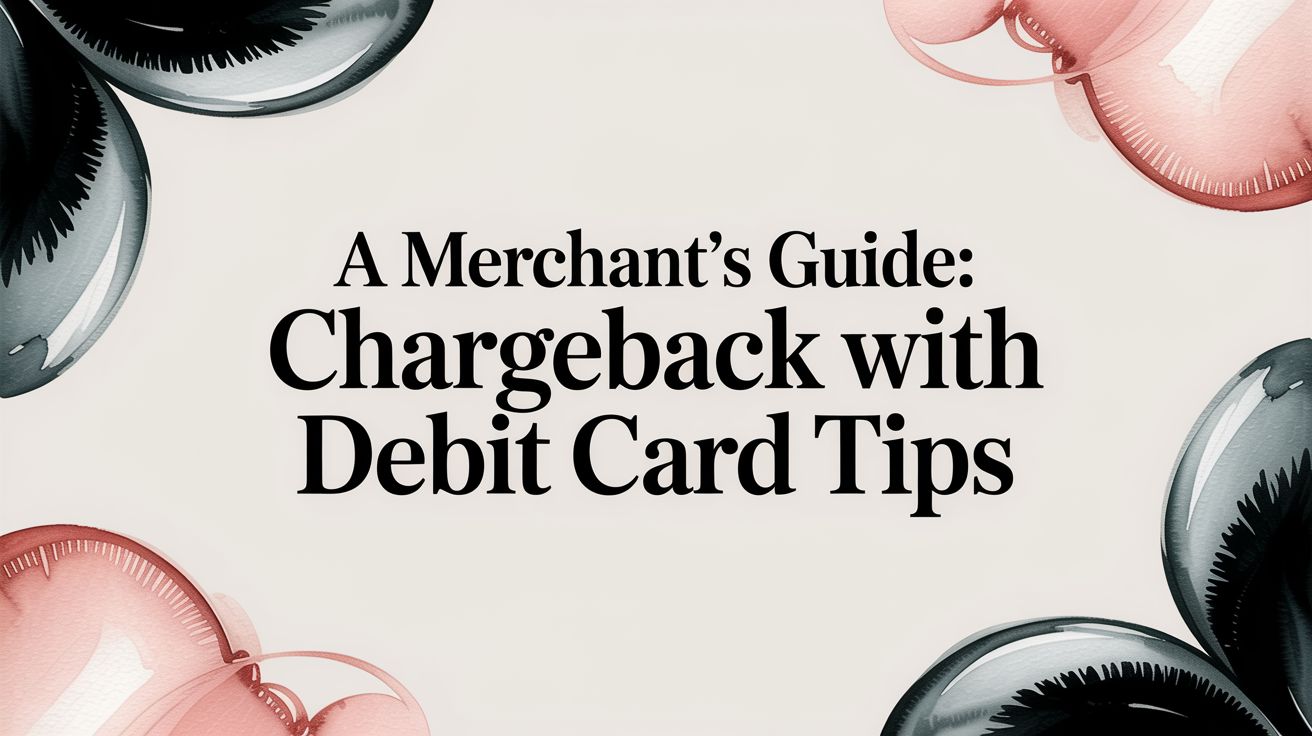
Understanding Chase chargeback time limits is essential for both cardholders and merchants alike.
In this guide, we will shed light on the specific timeframes imposed on disputing transactions.
From the initial initiation of a dispute by cardholders to the response window granted to merchants, each step in the Chase chargeback journey is governed by stringent time constraints.
By grasping these critical time limits and the corresponding actions required within them, readers will gain valuable insights into navigating and effectively managing chargeback disputes with Chase.
How Chase Chargebacks are Different from Other Network Chargebacks?
Chase, although primarily a bank, offers a range of payment processing services under Chase Payment Solutions.
Unlike payment networks like Visa or Mastercard, Chase doesn't operate as a transaction intermediary between banks and merchants.
However, when it comes to chargebacks, Chase, as an issuing bank, operates within the framework established by these major networks.
Visa, Mastercard, and other leading networks have set forth regulations that both issuing banks, such as Chase, and merchants must adhere to regarding chargebacks.
These regulations cover various aspects, including dispute timeframes and evidence requirements.
Consequently, Chase aligns its chargeback procedures with these network rules in handling disputes for its customers.
Despite this alignment, some nuances set Chase chargebacks apart:
Initial Contact: When initiating a chargeback, Chase cardholders may utilize Chase's dedicated online portal or customer service line, following procedures tailored to Chase's specifications.
Chase Involvement: Before forwarding a dispute to the network, Chase may undertake additional internal steps. These could involve communicating with the merchant or gathering preliminary information from the cardholder, ensuring a streamlined process within its framework.
By adhering to network regulations while incorporating its procedures, Chase ensures a comprehensive approach to handling chargebacks that meets both industry standards and its customers' needs.
Chase Chargeback Time Limit for Cardholders
Cardholders who wish to dispute a charge on their Chase credit or debit card must do so within a specific timeframe. Chase sets a chargeback time limit of 60 days from the transaction date for cardholders to initiate the dispute process.
Within this 60-day window, cardholders should file a dispute through various channels provided by Chase, such as the online portal or customer service line.
Cardholders must act promptly upon identifying an unauthorized or incorrect charge to ensure timely resolution.
For example, if a cardholder notices a fraudulent charge on their Chase credit card statement dated January 1st, they must initiate the dispute process no later than March 2nd to remain within the 60-day timeframe.
Adhering to the chargeback time limit is essential for cardholders seeking resolution for unauthorized transactions or billing errors.
By promptly reporting discrepancies within the specified timeframe, cardholders can protect themselves from potential financial losses and ensure a smoother resolution process with Chase.
How to Dispute a Transaction Within Time Limit?
Disputing a transaction within the specified time limit is crucial for cardholders seeking resolution for unauthorized charges or billing errors on their Chase credit or debit card.
Here's a step-by-step guide on how to initiate a dispute within the 60-day timeframe:
1. Gather Information
Collect all relevant details regarding the disputed transaction, including the transaction date, amount, merchant name, and any supporting documentation, such as receipts or screenshots.
2. Log into the Chase Account
Access your Chase online account or mobile app, where you can view your transaction history and initiate a dispute. Alternatively, you can contact Chase customer service via phone for assistance with the dispute process.
3. Initiate Dispute
Navigate to the transaction in question and select the option to dispute it. Provide a brief explanation of why you're disputing the charge, including any relevant details or evidence to support your claim.
By following these steps and initiating the dispute within the 60-day time limit, cardholders can effectively contest unauthorized charges or billing discrepancies and seek resolution with Chase on time.
Chase Chargeback Time Limit for Merchants
Merchants who receive a chargeback dispute from a Chase cardholder must adhere to specific time limits set by Chase for responding to these disputes.
While industry standards typically provide merchants with 45 days to respond to chargeback disputes, Chase imposes a slightly shorter timeframe of 39 days for merchants to submit their responses.
This means that upon receiving a chargeback notification from Chase, merchants have a limited window of 39 days to provide a compelling response and supporting documentation to challenge the disputed transaction.
Merchants must act promptly and efficiently within this timeframe to maximize their chances of successfully contesting the chargeback.
Failure to meet the specified deadline could result in the chargeback being automatically ruled in favor of the cardholder, leading to a loss of funds for the merchant.
Therefore, merchants need to prioritize timely communication and thorough documentation to effectively navigate the chargeback process with Chase.
How to Respond With This Limited Time Window?
Navigating the chargeback process within Chase's shorter timeframe requires merchants to respond promptly and efficiently to disputes raised by Chase cardholders.
Here's a guide on how merchants can effectively respond within the 39-day time limit:
1. Prompt Notification
Upon receiving a chargeback notification from Chase, merchants should promptly review the details of the disputed transaction and assess the validity of the claim.
2. Gather Documentation
Collect all relevant documentation related to the disputed transaction, including order details, shipping information, and communication records with the cardholder.
3. Review the Chargeback Reason Code
Understand the specific reason code provided by Chase for the chargeback and ensure that your response addresses the underlying issue effectively.
4. Prepare Response
Craft a comprehensive response that addresses the cardholder's claim and provides compelling evidence to support your position. Clearly outline the reasons why the chargeback is unjustified and include any relevant documentation to substantiate your argument.
5. Submit Response
Utilize Chase's designated channels for submitting chargeback responses, ensuring that all required information and documentation are included. Be mindful of any formatting or submission guidelines provided by Chase to avoid delays in processing.
By following these steps and responding promptly within the limited 39-day time window, merchants will effectively contest chargebacks and protect their financial interests under Chase's policies and procedures.
Whole Chase Chargeback Process
The chargeback process with Chase involves several stages aimed at resolving disputes between cardholders and merchants efficiently.
Here's an overview of the typical Chase chargeback process:
1. Initiation of Dispute
The process begins when a Chase cardholder initiates a dispute for a transaction on their credit or debit card. This could be due to unauthorized charges, billing errors, or dissatisfaction with the product or service received.
2. Refund and Deduction
Upon receiving the dispute, Chase typically refunds the disputed amount to the cardholder while deducting the same amount from the merchant's account. This temporary refund ensures that the cardholder's funds are protected while the dispute is being investigated.
3. Dispute Documentation and Distribution
Chase creates and distributes documentation related to the dispute, outlining the details of the transaction and the cardholder's claim. At this stage, merchants may choose to challenge the chargeback through a process known as representment.
4. Representment
In representment, the merchant is required to provide compelling evidence to demonstrate that the charge was legitimate and the cardholder's claim is false. Unlike some other banks, Chase provides its paperwork for merchants to use during the representment process, streamlining the submission of evidence.
5. Chase Review
Once the evidence is submitted, Chase reviews the documentation provided by both the cardholder and the merchant to make an informed decision.
Decision
If Chase determines that the merchant has provided sufficient evidence to support their case, the disputed funds are returned to the merchant, and any temporary credit issued to the cardholder is revoked.
However, if Chase finds the evidence insufficient or if the merchant chooses not to contest the chargeback, the temporary credit becomes permanent, and the disputed funds remain with the cardholder.
By following this structured process, Chase aims to fairly adjudicate chargeback disputes while safeguarding the interests of both cardholders and merchants involved.
Win and Manage Chase Chargeback Within Time Limit
In today's fast-paced business environment, efficiently managing chargeback disputes within the time limits imposed by Chase is paramount for merchants.
ChargePay offers a cutting-edge solution designed to streamline the entire chargeback process, enabling businesses to reclaim lost revenue and maintain their financial stability.
Leveraging advanced AI technology, ChargePay automates the chargeback management workflow, allowing merchants to respond to disputes in real time and significantly improve their win rate.
With ChargePay, merchants effortlessly contest and win Chase chargebacks within the designated time limit, ensuring swift resolution and minimizing the impact on their bottom line.
The platform's AI-driven representments empower businesses to provide compelling evidence to support their case, increasing the likelihood of successful outcomes.
By harnessing the power of ChargePay, merchants reclaim lost revenue, eliminate fraud, and bolster their reputation with acquirers and issuers, all while enjoying the convenience of hands-free chargeback management.







.svg)







.svg)
.svg)
.svg)